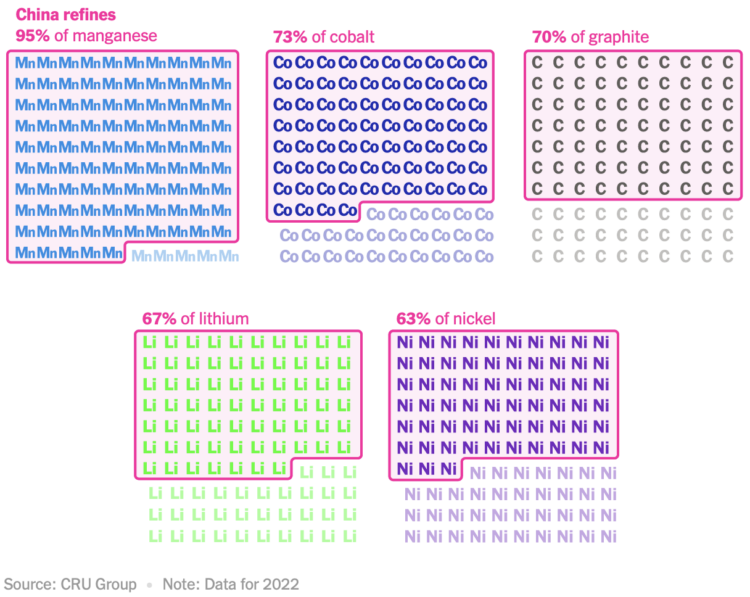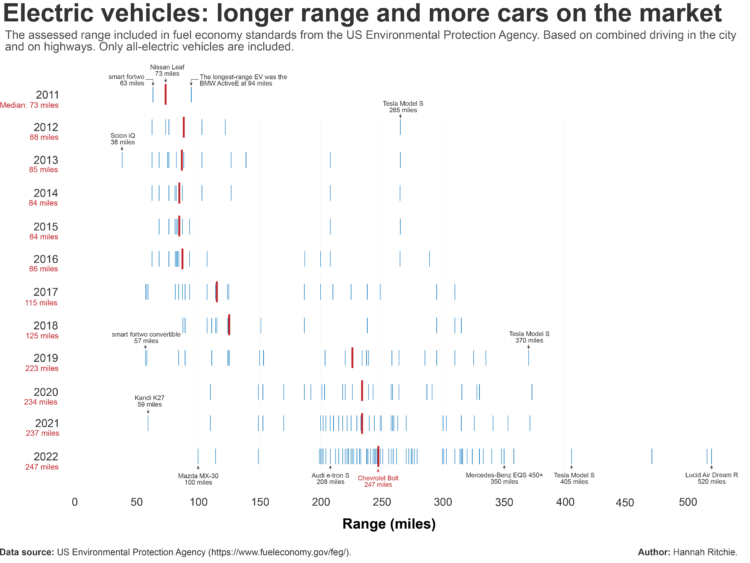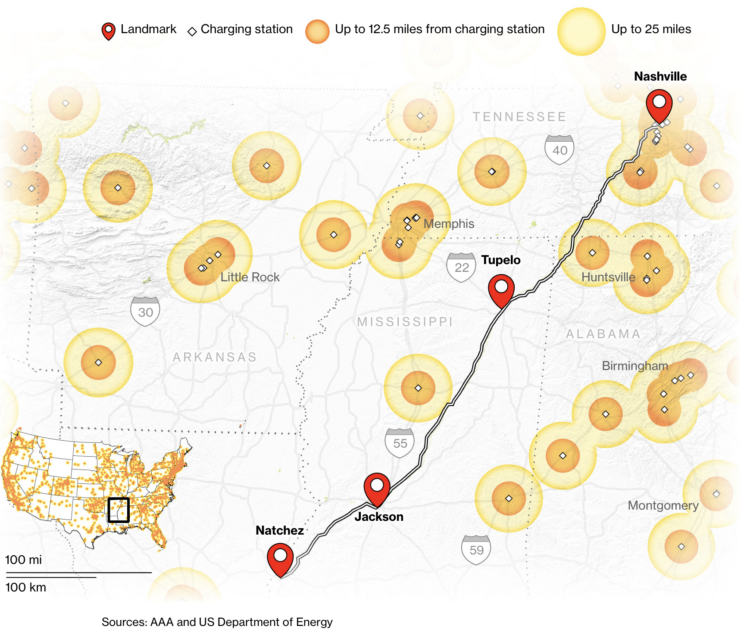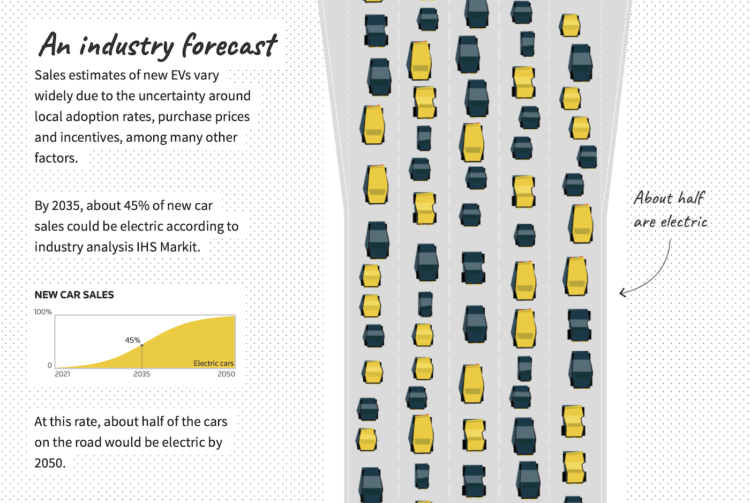For The New York Times, Agnes Chang and Keith Bradsher ask if it’s possible for the world to make EV batteries without China. Going over manufacturing and the materials involved, it looks like probably not:
Experts say it is next to impossible for any other country to become self-reliant in the battery supply chain, no matter if it has cheaper labor or finds other global partners. Companies anywhere in the world will look to form partnerships with Chinese manufacturers to enter or expand in the industry.
I appreciate the illustrative nature of these charts.
Tags: battery, China, electric vehicle, supply





